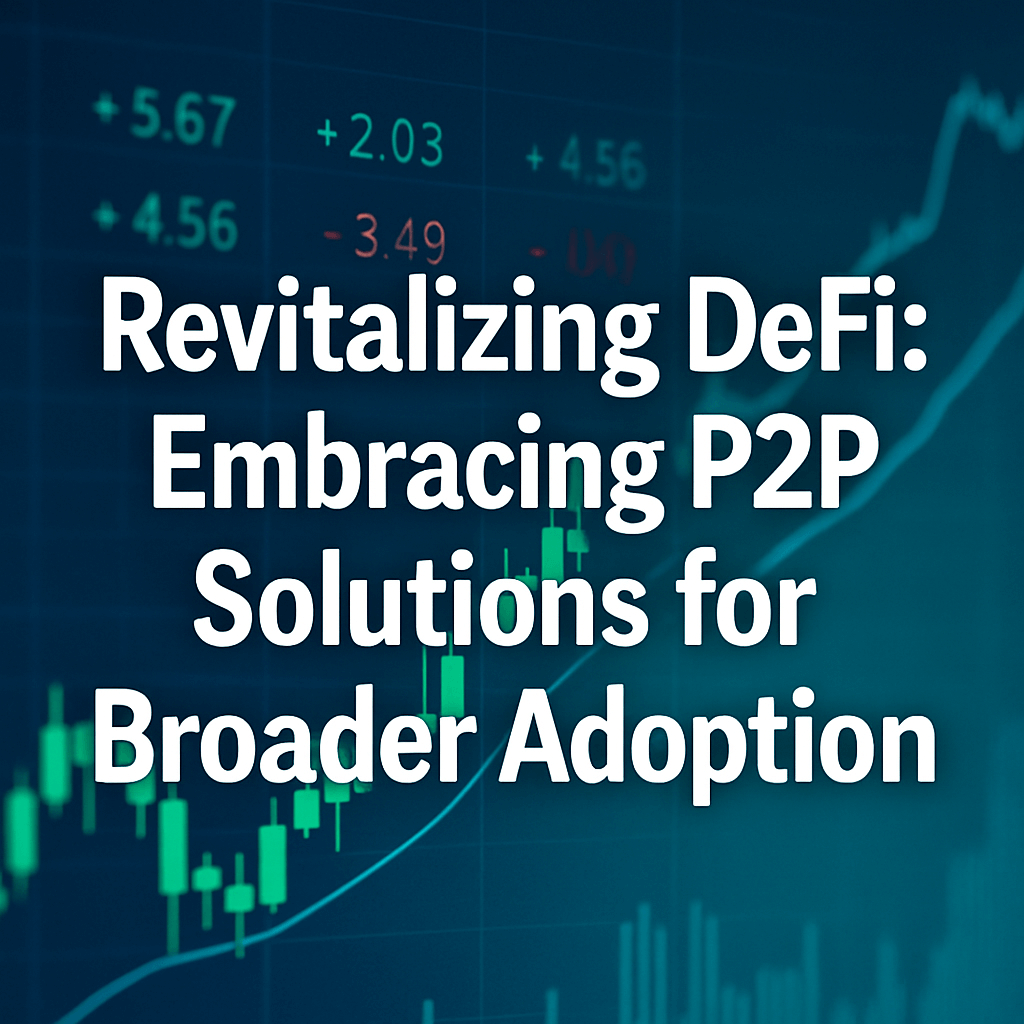Revitalizing DeFi: Embracing P2P Solutions for Broader Adoption


Decentralized Finance (DeFi) has emerged as one of the most promising innovations in the financial technology landscape, conceived with the ambition of circumventing traditional financial intermediaries. However, to achieve true mass adoption, DeFi must return to its peer-to-peer (P2P) origins, empowering individuals through permissionless interactions while restoring the transparency that early DeFi pioneers envisioned.
The Evolution of DeFi
DeFi platforms initially aimed to democratize finance. Using blockchain technology, they facilitated direct transactions between users without the need for centralized authorities. However, as popularity soared, many DeFi projects began to mirror traditional financial structures by introducing complex governance models and liquidity pools that could often confuse users.
Understanding the Technical Architecture
- Smart Contracts: Smart contracts are self-executing contracts with the terms of the agreement directly written into code. These are foundational for many DeFi applications, enabling secure, automated transactions without the need for intermediaries.
- Liquidity Pools: Liquidity pools are smart contracts that hold funds used for trading tokens. Users can contribute their assets to these pools in return for a share of the trading fees. However, reliance on these becomes problematic when users lack understanding of impermanent loss.
- Decentralized Exchanges (DEXs): DEXs allow for the trading of cryptocurrencies without intermediaries. They utilize automated market maker (AMM) protocols, which can introduce price slippage and less user control over trades compared to traditional exchanges.
The Role of Transparency in Building Trust
One of the cornerstones of DeFi was the promise of transparency – users could inspect code and transaction histories to ensure the legitimacy of the platforms they were using. Unfortunately, as DeFi evolved, some projects became opaque due to their complex specifications and proprietary mechanisms. In contrast, greater transparency can lead to increased user confidence, which is crucial for wide-scale adoption.
“Trust is the new currency in the DeFi ecosystem. Users demand clarity and accountability to create a robust financial foundation,” explains Laura, a blockchain analyst at Crypto Research Institute.
Strategies for Rebuilding Trust and Encouraging Mass Adoption
- Simplifying User Interfaces: Investing in user-friendly designs can make DeFi accessible to less tech-savvy individuals. Simple navigation and clear user guides can help demystify the experience.
- Education and Outreach: Initiatives aimed at educating potential users about blockchain and DeFi can nurture a more informed user base, ultimately driving higher usage.
- Leverage Regulatory Clarity: Navigating regulatory environments can bolster or hinder DeFi’s growth. Engaging with regulators to ensure compliance can reassure users about the legitimacy of DeFi protocols.
Recent Developments in DeFi
As of October 2023, recent trends in the DeFi landscape have showcased a resurgence of interest in P2P lending protocols. Platforms such as Aave and Compound have begun focusing on they frameworks, allowing individuals to lend and borrow assets directly, leveraging smart contracts to enforce terms autonomously. Additionally, recent discussions in the crypto community emphasize enhancing the usability of DeFi protocols, with many suggesting that the next wave of innovation will involve jurisdictions cooperating to create clearer guidelines that can facilitate safer DeFi participation across borders.
Conclusion
Revitalizing DeFi requires a shift back to its foundational principles of peer-to-peer interactions, user empowerment, and transparency. By focusing on educating users, simplifying access, and maintaining regulatory compliance, the industry can pave the way for the mass adoption of DeFi that truly fulfills its potential.